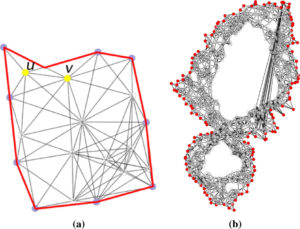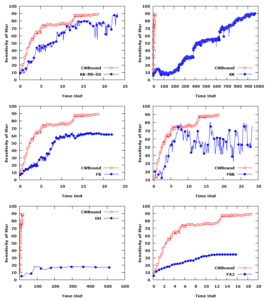Efficient message forwarding in mobile ad hoc network in disaster scenarios is challenging because location information on the boundary and interior nodes is often unavailable. Information related to boundary nodes can be used to design efficient routing protocols as well as to prolong the battery power of devices along the boundary of an ad hoc network. In this article, we developed an algorithm, CWBound, which discovers boundary nodes in a complex non-convex mobile ad hoc (CNCAH) networks.
Experiments show that the CWBound algorithm is at least 3 times faster than other state-of-the-art algorithms, and up to 400 times faster than classical force-directed algorithms. The experiments also confirmed that the CWBound algorithm achieved the highest accuracy (above 97% for 3 out of the 4 types of CNCAH networks) and sensitivity (90%) among the algorithms evaluated.
The author’s version of a work that was accepted for publication can be downloaded from http://eric.lostcity-studio.com/wp-content/uploads/2019/08/CWBound.pdf. Se-Hang, Cheong, and Yain-Whar Si. "CWBound: boundary node detection algorithm for complex non-convex mobile ad hoc networks." The Journal of Supercomputing (2018): 1-20.

